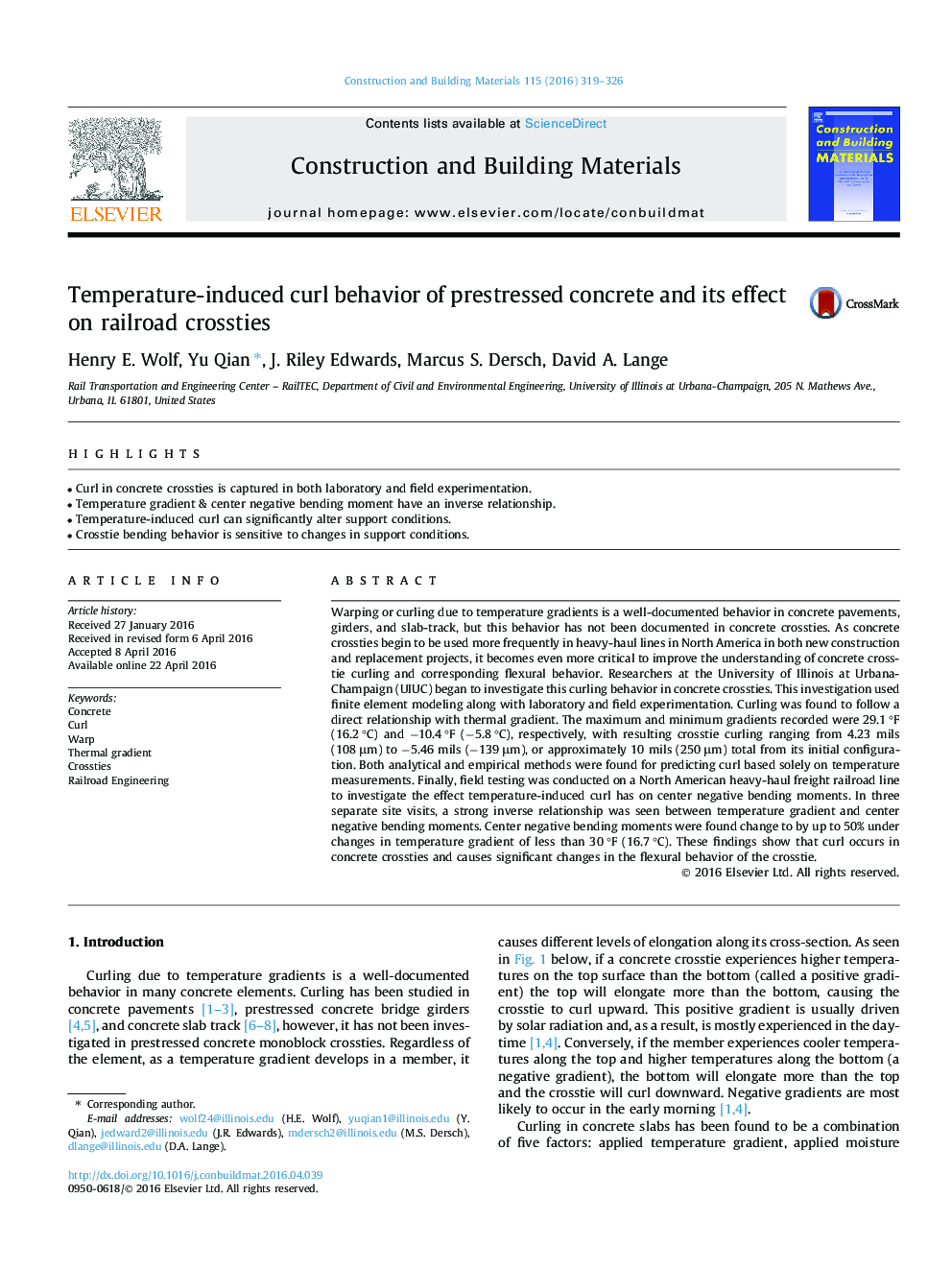| کد مقاله | کد نشریه | سال انتشار | مقاله انگلیسی | نسخه تمام متن |
|---|---|---|---|---|
| 6718907 | 503542 | 2016 | 8 صفحه PDF | دانلود رایگان |
عنوان انگلیسی مقاله ISI
Temperature-induced curl behavior of prestressed concrete and its effect on railroad crossties
ترجمه فارسی عنوان
رفتار کرل ناشی از دما از بتن پیش مقبره و اثر آن بر روی سطوح راه آهن
دانلود مقاله + سفارش ترجمه
دانلود مقاله ISI انگلیسی
رایگان برای ایرانیان
کلمات کلیدی
بتن، حلقه، تار گرادیان حرارتی، صلیب سرخ مهندسی راه آهن،
موضوعات مرتبط
مهندسی و علوم پایه
سایر رشته های مهندسی
مهندسی عمران و سازه
چکیده انگلیسی
Warping or curling due to temperature gradients is a well-documented behavior in concrete pavements, girders, and slab-track, but this behavior has not been documented in concrete crossties. As concrete crossties begin to be used more frequently in heavy-haul lines in North America in both new construction and replacement projects, it becomes even more critical to improve the understanding of concrete crosstie curling and corresponding flexural behavior. Researchers at the University of Illinois at Urbana-Champaign (UIUC) began to investigate this curling behavior in concrete crossties. This investigation used finite element modeling along with laboratory and field experimentation. Curling was found to follow a direct relationship with thermal gradient. The maximum and minimum gradients recorded were 29.1 °F (16.2 °C) and â10.4 °F (â5.8 °C), respectively, with resulting crosstie curling ranging from 4.23 mils (108 μm) to â5.46 mils (â139 μm), or approximately 10 mils (250 μm) total from its initial configuration. Both analytical and empirical methods were found for predicting curl based solely on temperature measurements. Finally, field testing was conducted on a North American heavy-haul freight railroad line to investigate the effect temperature-induced curl has on center negative bending moments. In three separate site visits, a strong inverse relationship was seen between temperature gradient and center negative bending moments. Center negative bending moments were found change to by up to 50% under changes in temperature gradient of less than 30 °F (16.7 °C). These findings show that curl occurs in concrete crossties and causes significant changes in the flexural behavior of the crosstie.
ناشر
Database: Elsevier - ScienceDirect (ساینس دایرکت)
Journal: Construction and Building Materials - Volume 115, 15 July 2016, Pages 319-326
Journal: Construction and Building Materials - Volume 115, 15 July 2016, Pages 319-326
نویسندگان
Henry E. Wolf, Yu Qian, J. Riley Edwards, Marcus S. Dersch, David A. Lange,
